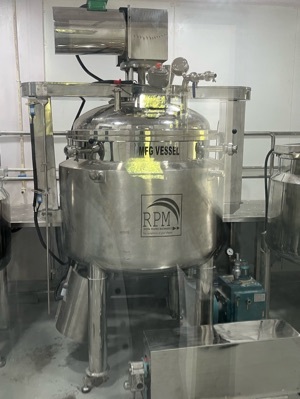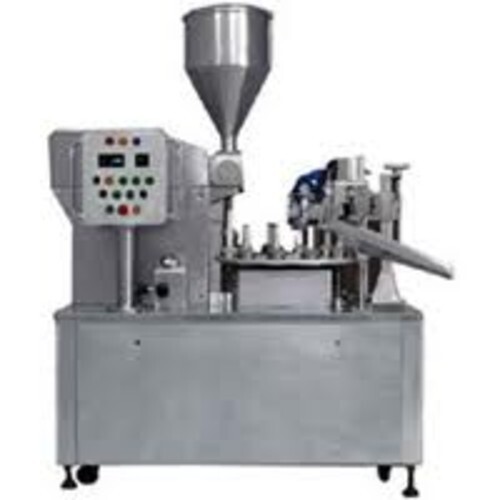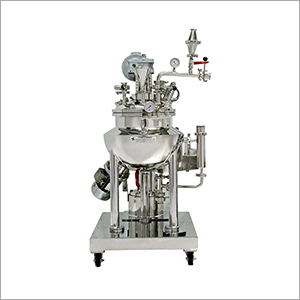 Mon - Sat: 10am - 6pm
Mon - Sat: 10am - 6pm
Ointment Manufacturing Vessel
650000 INR/Container
Product Details:
- Material Stainless steel
- Capacity 100 kg to 1 ton Kg/day
- Computerized Yes
- Color Silver
- Click to View more
X
Ointment Manufacturing Vessel Price And Quantity
- 1 Number
- 650000 INR/Container
Ointment Manufacturing Vessel Product Specifications
- Yes
- 100 kg to 1 ton Kg/day
- Stainless steel
- Silver
Ointment Manufacturing Vessel Trade Information
- Ankleshwar , Gujarat
- 1 Number Per Month
- 2 Months
- Contact us for information regarding our sample policy
- Transport
- Gujarat
Product Description
In the pharmaceutical and cosmetic sectors ointments creams gels and other semisolid formulations are made in ointment producing vessels and plants These containers and facilities are made to specifically satisfy the needs of ointment manufacturing operations providing effective and reliable production
Here are some essential elements that are frequently present in the equipment and vessels used to make ointments
1 These mixing pots are used to blend and combine the materials to create the ointment base To ensure homogeneous mixing they might use various agitators or mixers such as anchor propeller or highspeed emulsifiers
2 Heating and Cooling Systems Melting or heating specific ingredients and cooling the finished product are common temperature control techniques used in the production of ointments The plant incorporates heating and cooling equipment such as jacketed vessels heat exchangers or steam generators to control temperatures as necessary
3 Vacuum systems To eliminate air bubbles and accomplish correct emulsification vacuum is frequently used during the production process In order to establish and maintain the desired pressure levels vacuum systems utilise vacuum pumps condensers and vacuum receivers
4Homogenizers To maintain the uniform distribution of ingredients and provide a smooth texture homogenization is a critical stage in the production of ointments To reduce particle size and emulsify the formulation homogenizers such colloid mills and highpressure homogenizers are used
5 After the ointment is created it must be moved to packing containers using transfer and filling systems From the production vessel to the filling equipment or storage tanks the ointment is transported through transfer systems which include pumps pipelines and valves
6 CleaninPlace CIP Systems Sanitation and cleanliness are essential in the production of pharmaceuticals By circulating cleaning agents rinses and disinfectants CIP systems enable automatic cleaning of the industrial vessels and pipes
7Control Systems In order to monitor and control numerous process parameters such as temperature pressure mixing speed and timings ointment production facilities are outfitted with control systems such as programmable logic controllers PLCs or distributed control systems DCS
Its vital to remember that an ointment manufacturing plants specific setup and equipment can change depending on the volume of production the kind of ointments being produced and other unique requirements of the company To develop a plant that is adapted to your unique requirements consulting with specialised engineering firms or equipment suppliers is advised
FAQ
1 What kinds of vessels are employed in the production of ointments
Ans Mixing vessels reaction vessels homogenizers separators heat exchangers and packaging lines are frequently used in the manufacture of ointments
2 What substances are utilised to construct the vessels
Ans Stainless steel or Tialloy are frequently employed in the construction of ointment vessels
3 How frequently should a ship be examined
Ans In order to maintain safety and compliance with production standards vessels should undergo routine inspections
4 What kind of control system are employed in factories that make ointments
Ans The production process should be monitored and controlled by an automated control system
5 What safety precautions are implemented at factories that make ointments
Ans Ointment manufacturing facilities adhere to safety standards for labelling ingredient storage and protective apparel
Tell us about your requirement

Price:
Quantity
Select Unit
- 50
- 100
- 200
- 250
- 500
- 1000+
Additional detail
Mobile number
Email








